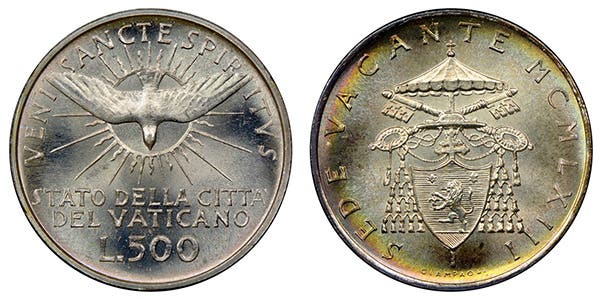Roman gold coin helps date site
Coins can serve the same purpose as can an index fossil. Coins can help date an archaeological dig site in a similar fashion as can a fossil help date the…
Coins can serve the same purpose as can an index fossil. Coins can help date an archaeological dig site in a similar fashion as can a fossil help date the strata in which that fossil is found. The important part in both scenarios is for the find to be documented in its proper context prior to that find being disbursed to museums, collectors or souvenir hunters.
An ancient Roman gold aureus of the Emperor Nero was recently discovered by professional archaeologists in Jerusalem, this being a very unusual find since gold coins were not struck in Judaea during this period. It is also unusual since the coin depicts the young bust of Nero facing right on the obverse, making the iconography on the coin unacceptable to the contemporary Jewish population due the coin depicting of an individual.
Roman procurator Pontius Pilate issued coins a few years earlier on which the pagan sacrificial simpulum or libation ladle appears on one side, with three drooping barley ears on the reverse. Pilate’s coins were struck in the name of the Emperor Tiberius but without the emperor’s image. The objects depicted were possibly chosen as an intentional insult to religious beliefs held by the Jews, among whom these ‘widows mite’ bronze lepton coins circulated.
In a Sept. 13 press release, University of North Carolina at Charlotte adjunct professor and resident archaeologist Shimon Gibson said of the newly encountered aureus coin, “The coin probably came from one of the rich 2,000-year-old Jewish dwellings which the UNC Charlotte team have been uncovering at the site. These belonged to the priestly and aristocratic quarter located in the Upper City of Jerusalem. Finds include the well-preserved rooms of a very large mansion, a Jewish ritual pool [mikveh] and a bathroom, both with their ceilings intact.”
Gibson added, “The coin is exceptional, because this is the first time that a coin of this kind has turned up in Jerusalem in a scientific dig. Coins of this type are usually only found in private collections, where we don’t have clear evidence as to [the] place of [their] origin.”
Gibson conjectured, “It’s a valuable piece of personal property and wouldn’t have been cast away like rubbish or casually dropped. It’s conceivable that it ended up outside these structures in the chaos that happened as this area was destroyed.” (Gibson is referring to the First Revolt of 66-73 C.E. that resulted in the destruction of the temple in Jerusalem.)
The reverse of the recently discovered coin features an oak wreath with inscription EX SC within the wreath and legend PONTIF.MAX.TR.P.IIII P.P. about the edge. The obverse legend reads NERO CAESAR AVG IMP. This indicates the coin was struck at the mint in Rome between December C.E. 56 and December 57. An examination of recently published photographs of the coin suggest it is likely an example of Roman Imperial Coins (RIC) Volume I, Number 14, and H. Mattingly with R.A.G Carson Coins of the Roman Empire in the British Museum (BMCRE) Volume I, No. 15.
The coin was found alongside other non-numismatic artifacts in rubble material outside first century Jewish villas being excavated as part of the Mount Zion archaeological project. Work at the site will resume again next year.
According to the Sept. 14 issue of Heritage Daily, “The archaeologists hypothesized that the gold coin was part of one of these individual’s stores of wealth, amassed before their mansions were razed – along with the rest of the city – by Titus and the Roman legions. The valuable coin was likely hidden prior to the destruction of Jerusalem and simply overlooked by Roman soldiers looting in the aftermath of their demolition.”
An aureus issued at the time of Nero is comprised of 7.27 grams of gold, which is 0.889 percent of the weight of an aureus from the time of Julius Caesar, less than a century earlier. An aureus was valued at 25 silver denarii, the denarius being the daily pay for most skilled laborers of the time.
This article was originally printed in World Coin News.
>> Subscribe today or get your >> Digital Subscription
More Collecting Resources
• The Standard Catalog of World Coins, 1601-1700 is your guide to images, prices and information on coins from so long ago.
• Any coin collector can tell you that a close look is necessary for accurate grading. Check out this USB microscope today!








